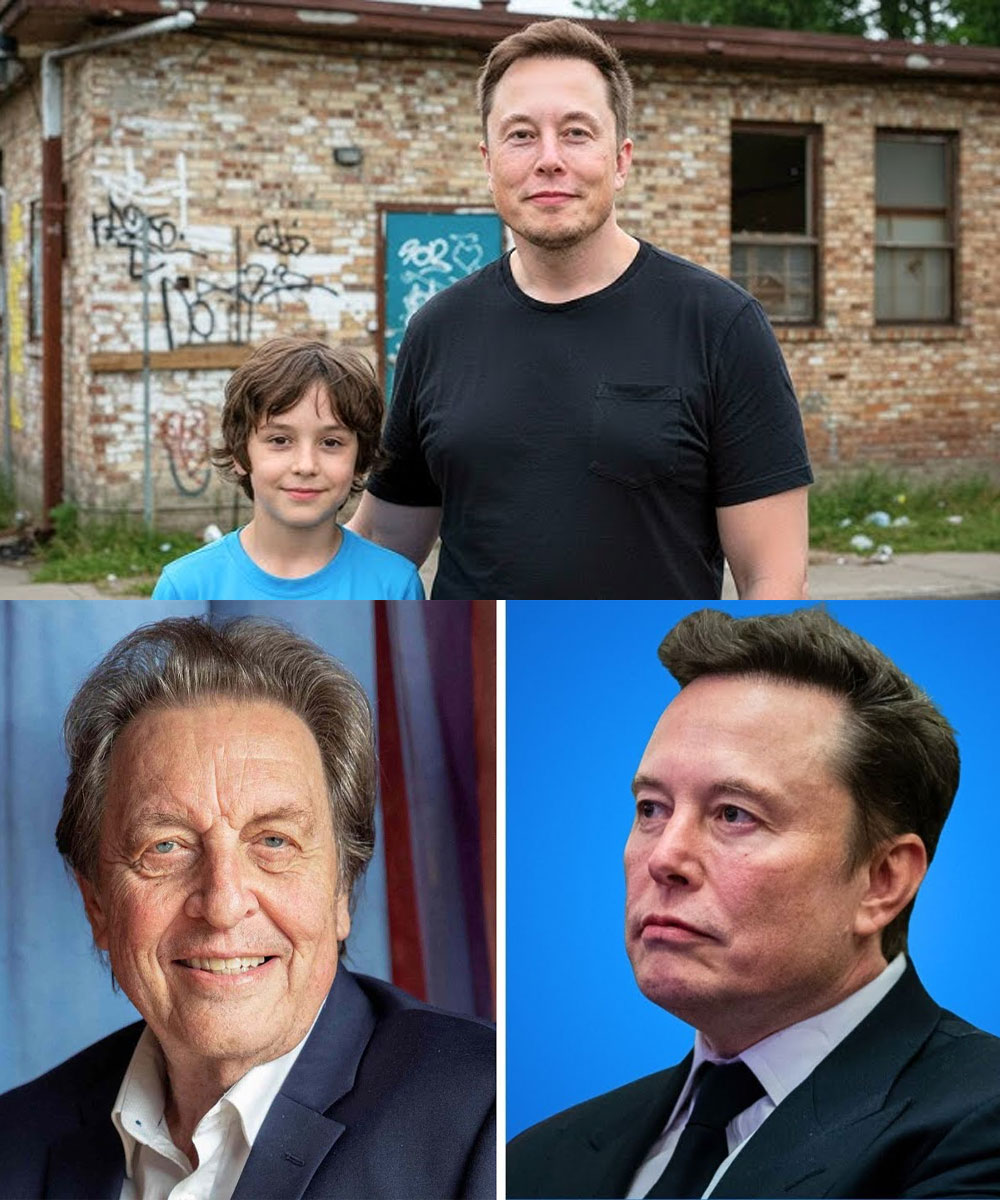What began as a quiet gift of reconciliation became a national headline. Errol Musk didn’t move in — he turned the estate into a STEM academy for township kids. The world was stunned. And for the first time in years, father and son began to heal.
Elon Musk is no stranger to extravagant moves. Rockets, electric cars, tunnel systems under Los Angeles—his gestures tend to make headlines, sometimes outrage, and often history.
But this time, he made no announcement. No tweet. No press conference.
In the quiet hills of Cape Town’s Hout Bay, perched high above the Atlantic, Elon Musk purchased a $2.5 million mansion. Sleek, modern, serene—designed for someone who could afford solitude. But the house wasn’t for Elon.
It was for his father.

A Complicated Past
Errol Musk has long been a controversial figure in Elon’s life. In interviews, Elon has described him as a “brilliant engineer” and “terrible human being,” often in the same breath. After their parents’ divorce, Elon chose to live with Errol in Pretoria, a decision he later said left emotional scars he never quite shook.
Errol was the one who taught young Elon how to take apart engines, how to solve problems with logic instead of emotion. But he was also, by Elon’s own account, stern, unyielding, and often cruel. Their relationship fractured further in adulthood, punctuated by long silences and the occasional pointed quote in the press.
So when Elon quietly arranged for the purchase of the Hout Bay mansion—using a shell company to keep it out of public view—no one, not even his siblings, knew what to make of it.
Elon didn’t offer explanations. He just booked a quiet trip to Cape Town, walked into a modest restaurant in Bellville where he and Errol used to eat decades ago, and handed his father an envelope.
Inside it was the deed to the house.
“What’s this?” Errol asked, stunned.
“It’s a house,” Elon said. “For you.”
Errol looked at him, eyes narrowing with suspicion. “Why?”
Elon paused. “Because I can. And because you’re my father.”
It wasn’t a reconciliation. Not exactly. But it was something.
Then came the twist no one saw coming.
From Mansion to Mission
Within two weeks of moving in, Errol Musk began tearing the house apart.
Neighbors noticed construction crews. Walls were knocked down. Trucks arrived with tech equipment. Whispers began: Was this a covert Tesla skunkworks? A private SpaceX lab?
The truth was stranger—and better.
Errol had decided to convert the mansion into a school.
Specifically, a STEM-focused academy for underprivileged children from South Africa’s townships. He named it the Musk Innovation Academy.
“I didn’t want to just enjoy it,” Errol later told a local reporter. “I wanted to use it.”
A Home Transformed
The living room became a classroom filled with 3D printers and circuit boards. The kitchen turned into a cafeteria. Even the infinity pool was covered and transformed into an outdoor workshop where kids could tinker and build.
The master suite? A lab.
By the time the renovations were complete, the house was no longer a home—it was a place of possibility.
In October, 43 children from nearby townships arrived for the first day of class. Most had never stepped inside a building like it, let alone one built to serve them.
Errol Musk, long known as a distant and often difficult father, greeted them at the door.
A Father Redeemed?
What surprised many was how Errol changed. He taught patiently. He encouraged. He celebrated. To the students, he wasn’t Elon Musk’s father—he was simply “Mr. Musk,” the stern but kind teacher who believed in them.
“He’s harder on himself than he is on the kids,” one local parent said. “And that’s saying something.”
As the story spread, journalists took notice. Photos of Errol kneeling beside children, showing them how to debug programs or wire solar panels, went viral.
“Errol Musk Turns Luxury Home Into School for Township Kids,” read the headline in The Guardian. Praise poured in from across the world.
But still, one question lingered: What did Elon think?
The Second Visit
For six months, Elon said nothing.
Then one day, without warning, he flew back to Cape Town.
He didn’t bring cameras. He didn’t post on X. He just showed up at the school.
The students screamed when they saw him. Elon—who usually spoke to world leaders and billionaires—sat on the floor with an 8-year-old girl and helped her fix a line of code.
On the terrace, father and son finally stood face to face.
“You’ve done something incredible here,” Elon said.
Errol, never one for sentiment, simply replied: “They’re good kids. They just needed a chance.”
Building More Than a School
In the months that followed, donations poured in. The academy expanded. Graduates earned university scholarships and internships at South African tech companies. What started as a personal gesture became a national story of empowerment and potential.
The academy was proof that even brilliance born in hardship could shine—if given the chance.
And for Elon and Errol, it became a tentative bridge.
Their relationship wasn’t fixed. But they began to speak more often. They argued less. They worked together—on something that wasn’t just personal legacy, but communal impact.
A Final Word
When asked about the school in a rare interview, Elon didn’t mince words.
“My father and I don’t always agree. We never really have. But what he’s done with that house—it’s extraordinary. I’m proud of him.”
As for Errol?
He didn’t do it for redemption. Or reconciliation. Or headlines.
“I made a lot of mistakes with my own kids,” he said once. “But this house—it gave me a chance to be better. To be useful. And maybe that’s enough.”
In the end, what began as a quiet gift from a son to a father became something no one expected: a second chance—for a man, a family, and 43 kids who now believe they can build anything.